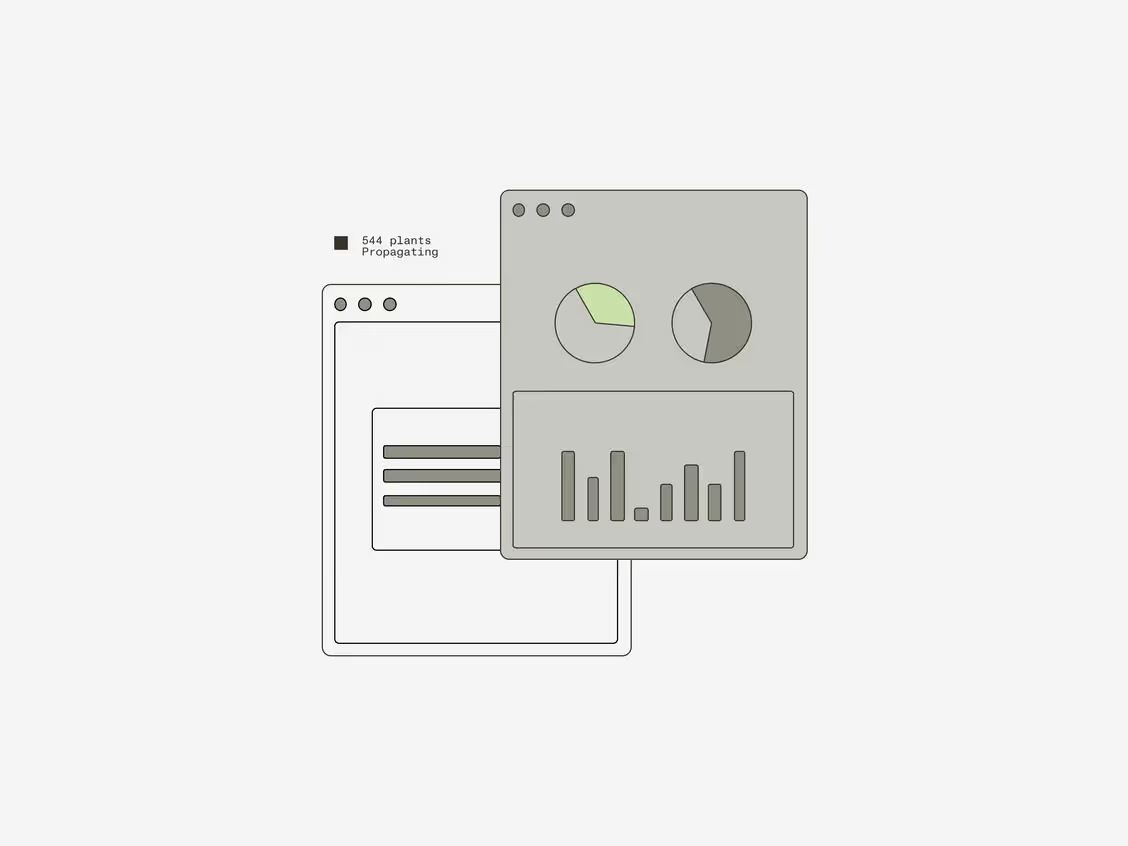Education Guide
Choosing the right setup for indoor cannabis cultivation

Even the most skilled growers accept the trial and error that comes with cultivation. That’s why growing indoors can be so appealing – cultivators have far more control. But what factors make the biggest impact on success?
Three types of indoor cannabis grow systems
Before exploring lighting, nutrients, or genetics, growers need to figure out which system makes the most sense for their cultivation. Growers typically have three types of indoor cannabis grow systems to choose from: human/manual systems, retrofit/discrete systems, and holistic control systems.
Human/manual systems
Human/manual grow systems rely on people to manually control all aspects of the cultivation and manage the overall environment, all the way into the root zone. That means when plants need water and a room gets too hot, the job doesn’t get done until someone grabs a watering can and turns on the AC.
Cultivators typically break into the craft using this approach, but it’s also not unusual for large-scale licensed operations to also have some human/manual systems in place. Of all the grow system options, this is the most labor-intensive and least reliable due to the potential for human error.
Retrofit/discrete systems
When a cultivator uses a device to control a piece of equipment in their indoor grow – a sprinkler irrigation system, for example – they’re moving from a manual to a retrofit/discrete grow system. A retrofit/discrete system setup incorporates thermostats, humidistats, CO2 alarms, and other devices designed to manage how and when equipment functions. Growers need to be prepared to program and monitor each device individually, as they are usually not connected to other systems or one other.
Holistic control systems
Most commercial indoor cultivation setups use a building management or greenhouse control module known as a holistic control system. Holistic control systems allow different types of equipment to be programmed in detail and facilitate each device’s ability to operate relative to each other. For example, when a grower reduces a room’s temperature, their holistic control system automatically adjusts the dehumidifier based on those new parameters. Holistic control systems are typically the most expensive and require the most time and energy to set up.
Indoor grow facility design considerations
After deciding on a grow system, cultivators can move onto the next phase: cultivation design.
When designing a manual grow system, logistics will center on what it takes for the human(s) onsite to work as quickly and efficiently as possible. The amount of time and investment to put into a manual grow system comes down to what the cultivator needs to get the job done.
Designing a discrete grow system means installing devices to control irrigation, fertigation, lighting, HVAC, CO2, and other functions. Depending on the needs of the cultivation, discrete grow systems are commonly more robust and effective than manual systems. They're also simpler to set up and less expensive than holistic grow systems. Before set up, growers must decide which equipment to manage via controller, and dedicate time and effort to initial set up and ongoing maintenance.
A holistic control system is optimal for greenhouses and large-scale indoor operations due to the large volume of environmental variables inherent to those facilities. For example, with different amounts of light, a grower will need to adjust their irrigation – but the amount of DLI and how much energy the plants are harvesting is also a factor. Many commercial facilities find operational management easier with holistic systems, most of which have a remote interface for offsite management.
A few more things to consider with facility design:
- What’s your environment? A facility located in a warm, inland climate will have different heating and cooling needs than a facility located near the ocean.
- Will the facility be using natural light, natural and supplemental lighting, or supplemental lighting only? Which light bulbs work best at different stages of production?
- What size is the grow space? How high are the ceilings? Bigger rooms experience slower changes in air temperature and relative humidity. This variable affects everything from ventilation to cultivar performance.
Building an indoor grow setup list
The indoor grow setup list for a manual system should center on the basics of what the plants need to grow, and what the grower needs to manage the needs of the plants. For irrigation that could mean a hose or watering can. Managing ventilation could include opening and closing doors or windows, or bringing in fans. Take the time to decide what the human managing the system needs to grow successfully.
With retrofit/discrete systems, the indoor grow setup list should define which controllers or custom solutions make the most sense for the operation. These systems rely on the use of multiple controllers away from a central location, giving the cultivation team multiple interfaces and data points to manage that will influence their everyday decisions.
Holistic control systems take the most time, energy, and funds to configure properly. Understanding how all the variables interact is key to choosing equipment that works together efficiently. While a holistic system requires more infrastructure and experience to set up properly, plants and humans alike benefit from their time-saving and operational advantages.
Key takeaways:
- Setting up an indoor grow begins with deciding which grow system to use: Human/Manual, Retrofit/Discrete, or Holistic Control.
- Human/manual systems rely upon one or more people controlling all aspects of the grow. Set up should focus on what they need to work quickly and efficiently.
- A retrofit/discrete system uses devices like thermostats and CO2 alarms to manage a specific piece of equipment. Set up starts with deciding which equipment needs a controller, and ongoing maintenance is required.
- Holistic control systems are the most expensive and time consuming to set up, but not only do they manage multiple pieces of equipment from a central location, they also make it easier to manage variables in a large-scale dynamic indoor environment.
